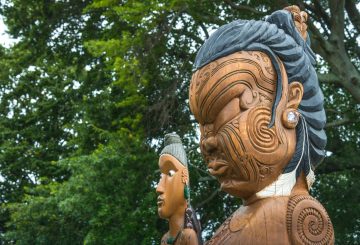Các doanh nghiệp du lịch Māori đang báo cáo rằng một sự thúc đẩy tài trợ được nhắm mục tiêu của chính phủ đang hỗ trợ phục hồi sau đại dịch của họ.
Năm ngoái, chính phủ đã công bố hỗ trợ tài trợ 15 triệu USD sẽ được chuyển giao trong vòng hai năm. Mục tiêu của quỹ là để bảo vệ các doanh nghiệp của các nhà khai thác du lịch Māori trong ngắn hạn, và để giúp họ chuẩn bị cho tương lai. Cho đến nay, khoảng 400 doanh nghiệp đã nhận được hỗ trợ nhắm mục tiêu thông qua quỹ.
Một người phát ngôn của Te Puni Kōkiri, Bộ Phát triển Māori, cho biết, “Chương trình Hỗ trợ kinh doanh Tāpoi đã hỗ trợ kịp thời, trực tiếp cho các nhà khai thác. Tiếp thị vẫn là dịch vụ theo yêu cầu nhất, khi các nhà khai thác sẵn sàng chào đón khách truy cập.
“Chương trình cũng cung cấp chuyên môn và hỗ trợ để giúp các doanh nghiệp tuân thủ những điều như thay đổi về sức khỏe và an toàn.
Lee-Anne Jago, đồng sở hữu của doanh nghiệp du lịch Waka Abel Tasman, là một trong những người nhận tài trợ. Khi dòng khách quốc tế dừng lại, bà nói rằng nguồn tài trợ cho phép doanh nghiệp tập trung vào giáo dục văn hóa cho các trường học và các sự kiện của công ty.
Tuy nhiên, bây giờ cô cảm thấy tích cực hơn về tương lai của doanh nghiệp.
“Chúng tôi đã có một số lạc quan đi vào mùa du lịch tiếp theo. Chúng tôi đã có một số khách quốc tế tham gia với chúng tôi. Tuần trước, chúng tôi đã có gia đình quốc tế đầu tiên của chúng tôi. Chúng tôi cảm thấy như đường chân trời đã thực sự thay đổi đối với chúng tôi và nó đang mở ra.”





























































